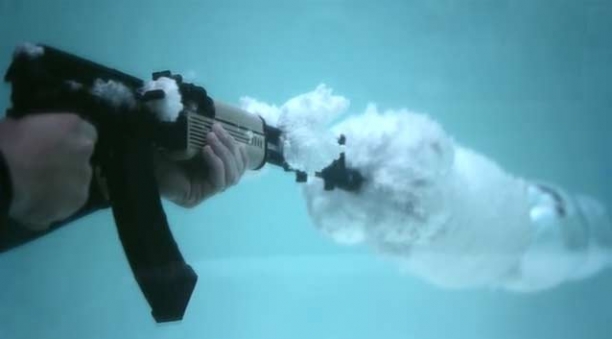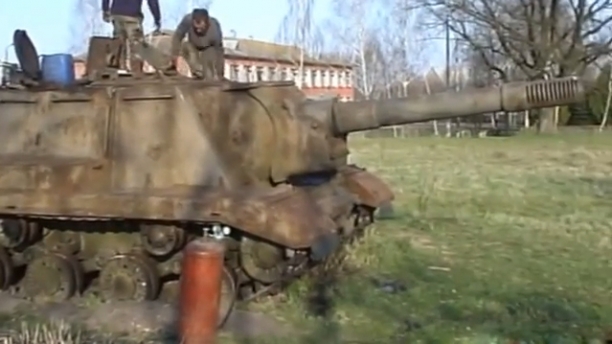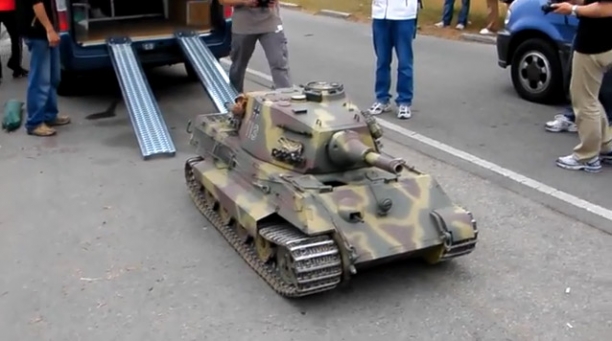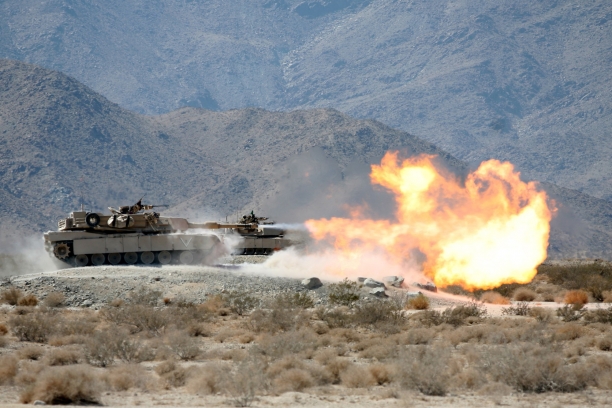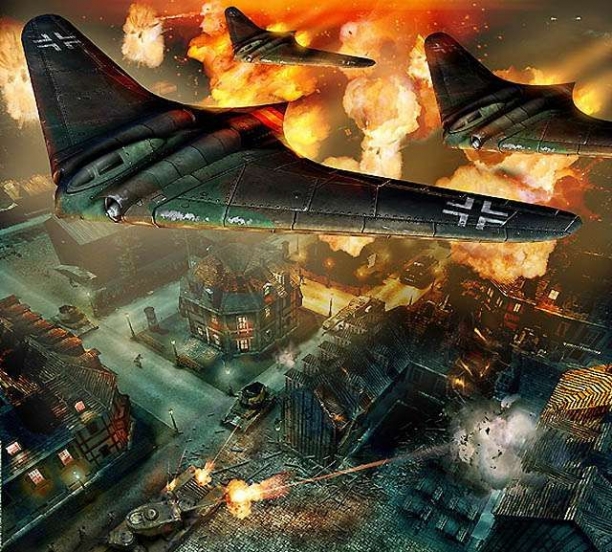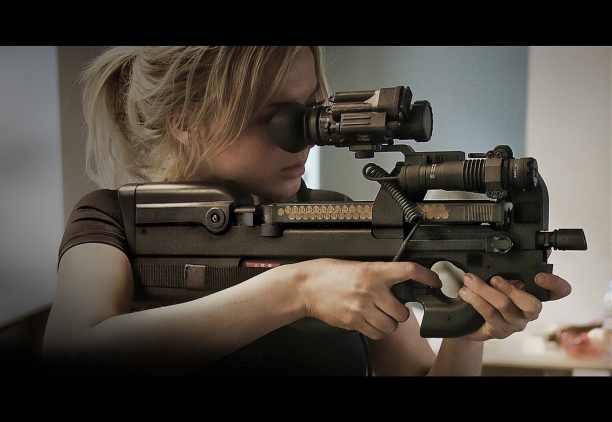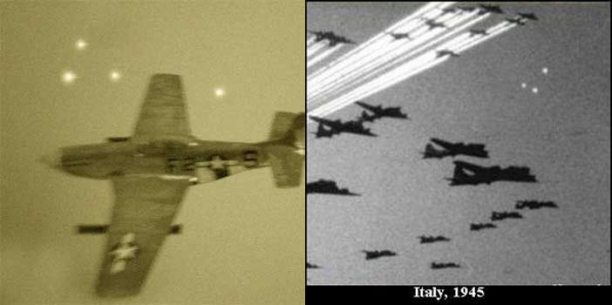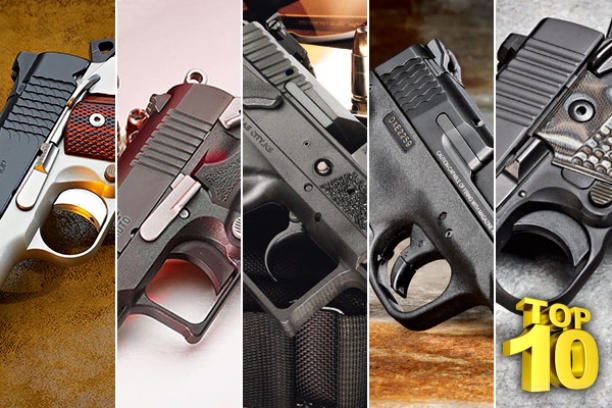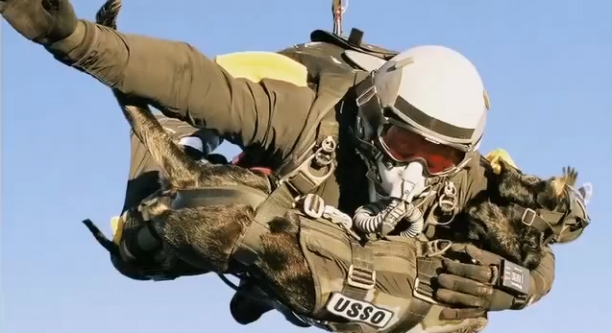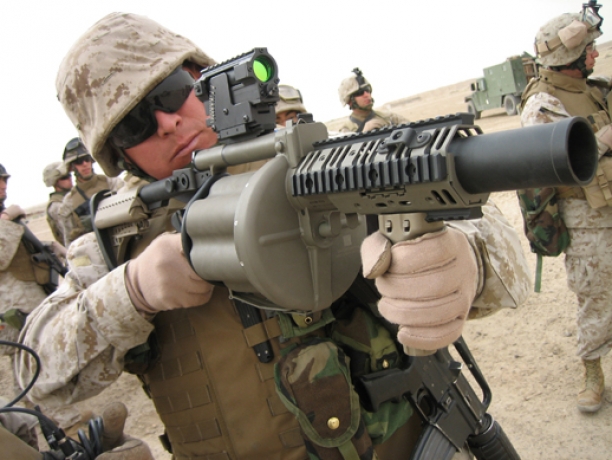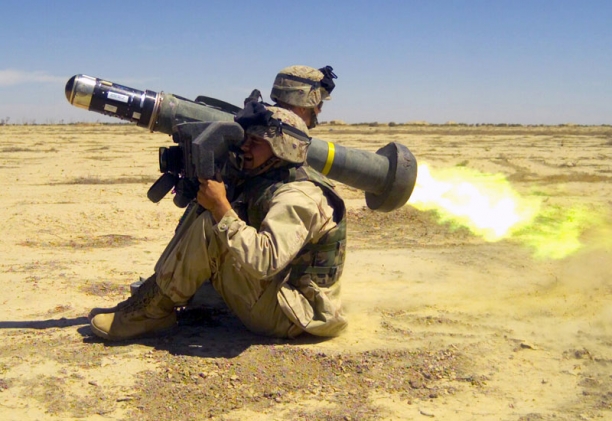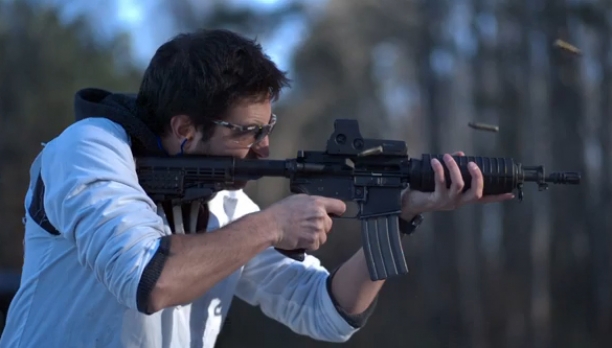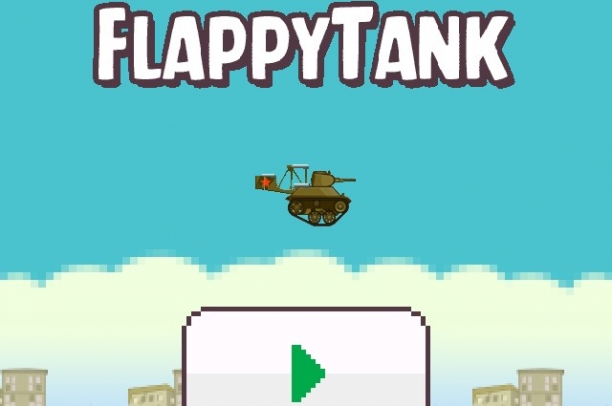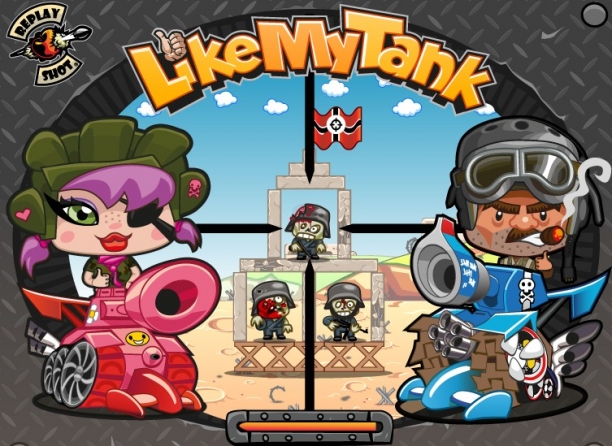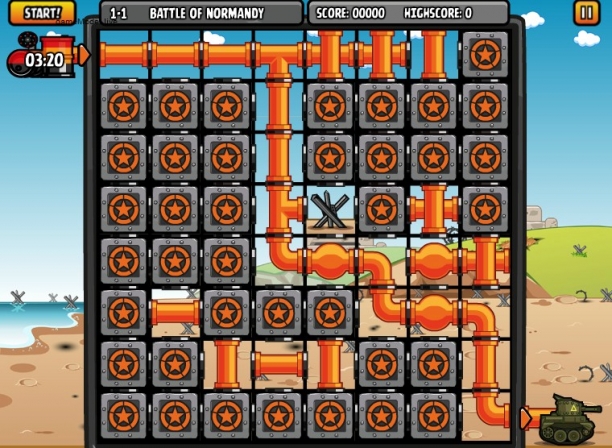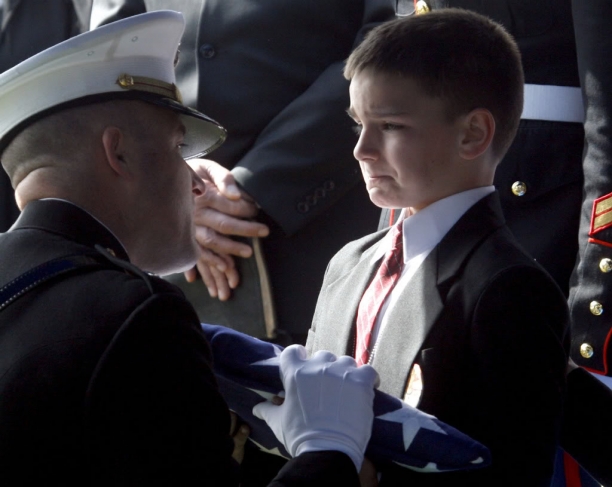Do you know what cavitation is? Check out this AK-47 action under the water for demonstration.
|
Nicknamed the "Beast Killer" this is a Soviet armored assault weapon that can definitely take out enemy tanks. It was used during the second World War, and it could completely annihilate a Nazi tank into a scrap metal pile.
|
This Nazi heavy tank built in 1942 which was used during World War 2 was called Tiger I. The ultimate formal German name was Panzerkampfwagen VI Tiger Ausf.E, oftentimes called Tiger for short. It was a response to a remarkable T-34 and the KV-1 which were part of the Soviet armor during the first months of encounter prior to the invasion of Soviet Union. Tiger was developed to counter and combat Soviet armors.
The design of Tiger I provided The Wehrmacht (refers to the German armed forces of WW II) their first tank mounting the 88 mm gun in its first version called the KwK 36. This gun was the primary weapon of Tiger I. It also showed its high effectiveness both on air and ground targets. The Tiger I was the combat fighting tank used during World War II on all German battlefronts. It was proven to be strong and tough and generally positioned in independent tank battalions.
What do you think?
|
During the Second World War, the Nazi heavy tank was commonly known as the Tiger II. The last official name of this heavy tank was known as Panzerkampfeagen Tiger Ausf. B, commonly known as Tiger B. The account of the weapon or armament list was Sd. Kfz. 182. It was also branded as Konigstiger and was usually refereed to as King or Royal Tiger by the Allied Forces.
Weight without battery - 210 kg
Length- 2.55 m
Width - 0.88 m
Height- 0.81 m
Two electric motors - 24 V , 500 W
Speed - 6-12 km/h
|
The most awe inspiring and destructive weapon used by the army is the tank. They first started being used in WWI by the British and the French, and since then they have been a menace on the field of battle. All through the twentieth century the tank has been a continuous weapon that has been used by the army to wreak havoc upon enemies far and wide. A the end of WWII over three thousand tanks fought in the Battle of the Bulge, then they took part in the Battle of Dezful which took place between Iraq and Iran, and then in countless other important battles. Today we will take a look at ten of the most amazing tank battles that have happened throughout time.
|
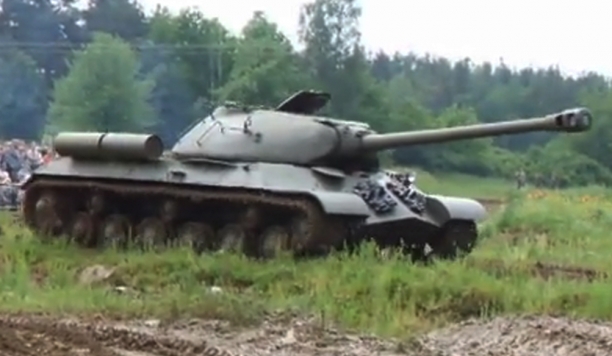
The IS-3 or the Iosef Stalin (Joseph Stalin) IS3 was part of a series of tanks that served Soviet Army during the WWII. The whole series was based upon the KV tanks and began with the IS-1 that was produced in the year 1943. The IS-2 came next during the very same year. The IS-2 came fitted with the 122, main gun - a lethal weapon indeed. The IS-3 was developed afterwards because the Soviets were convinced of its value.
The IS-3 modifications were a re-design of the whole series. For instance, the armor protection of the IS-3 is the best of the lot. This tank has better turret armor protection than its predecessors and is thus a safer machine to operate overall. The armor of the whole series was already a stand out. There were other modifications made on the turret. It was well-rounded and there was more space for the turret crew. Additional projectiles were also given ample space. For better protection from ballistics, the glacis plate had increased slope. The combined modifications on the turret and hull resulted in a lowered silhouette. This made the tank more difficult to track and target from any given angle.
The chief armament of the IS-3 was the 122mm (121.9mm). This was infamous during the war for its excellent penetration capacity and the flexibility that came with it. Expert crew can let off from 2-3 rounds every minute. The projectile choices were expanded as well to include 10 AP or armor-piercing rounds. In addition, there were 18 HE or high-explosive fragmentation. The IS-3 was capable of facilitating battlefield targets.
In October, 1944 the IS-3 prototype was designated as "Object 703." After a very short while and a series of evaluations this was approved for production. Factories in the Soviet Union capable of constructing heavy vehicles were soon busy with construction. The very first operational IS-3 tanks were entered into the inventory of the Soviet Red Army on May, 1945. The IS-3 appeared in the victory parade through the city of Berlin on 7th of September, however, it did not see much action at the front because the war in Europe was mostly over. Adolf Hitler had taken his life and the German capital has fallen under the control of the Soviet Army. Only a few pockets of the German war machine were still continuing the fight, so not much left to deal with.
But it was different in the Pacific because the Soviets were still fighting against Japan. It was said that an IS-3 regiment was deployed in August 1945 in the Far East (mission unknown). By the end of that month the Japanese empire would surrender signaling the end of the war in the Pacific and WWII.
At the time that the Second World War ended, the IS-3 was the most advanced war vehicle of its kind. The Soviets continued producing the IS-3 until mid-1946. About 2,311 units were completed. All the IS-3s in existence were inventoried by the Red Army. The tanks were in the Soviet stockades (it's allies as well) during the years of the Cold War. Even the Western powers had their eye on the IS-3 especially because this tank was a key influence in Soviet tank design in the twenty years that followed.
The IS-3 has a distinctively stout, low-set profile with a curved turret. Somehow its appearance recalls that of an upside-down frying pan. The rifled barrel is long with muzzle break that is double-baffled. The side track on either side has 6 road wheels. The drive sprocket is aft with 3 track return rollers and the idler is held in forward position. The rear compartment is where the V2-IS engine is located while the turret is forward. The heavy chassis was powered by the 520 horsepower engine capable of a top speed of 25 mph. Its range is 115 miles. The IS-3 weighs about 45.77 tons, was 32 feet, 4 inches long and eight feet high. It can be operated by four personnel.
The entire tank body was protected by 20mm - 230mm thick armor which would make it nine inches at the thickest areas. Aside from the armor, the IS-3 was equipped with the D-25T series main gun (121.9mm) and was formidable indeed. Enemy forces loathed attacking it from the front. Its primary weapons were 28 rounds of projectiles (122mm). The secondary armament was a 12.7mm anti-aircraft machine gun which carried 250 rounds. The IS-3 also had one to two 7.62mm anti-infantry machine guns which carried 756 rounds.
The IS-3's design was a step forward in a number of areas. However, it was still beset with mechanical problems much like other heavy tanks of that size. With regard to its operational abilities, the power pack was very unreliable. The transmission systems and engine were both prone to failure. These defects as well as a few matters concerning the hull were possibly due to the speed by which the Soviets pushed for its design & production. It is therefore not surprising that quality control problems would arise. Because of these limitations, a set of upgrades were done, intended to improve certain areas. Some of the improvements made were on the clutch mechanism, road wheels, and new radio equipment. The improvements added to the total weight of the tank by four tons and this additional burden hampered the IS-3's performance a bit.
The Red Army made good use of the IS-3 from the late 1940s until well into the '50s. During the Cold war, the tank underwent a modernization scheme that helped maintain its relevance. After all, its initial design was meant for the World War 2 stage and the Cold War was very different. A number of modern thoroughbreds eventually succeeded the IS-3 and this formidable war machine was soon retired to the history books. Nevertheless, before her time was ended, the IS-3 served a few foreign armies. Egypt was known to favor the IS-3 and even showcased the tank on parades as seen in 1956. The Israeli military captured a few units and these were reconstituted for use of the IDF. The IDF retrofitted the IS-3 with engines from the T54 tanks. The modification improved the performance level for the IDF and gave it a more modern feel. After China's part in the Korean War, this Communist nation also received IS-3 deliveries. The IS-3 was also used as a trainer for new Soviet tanker models before it was taken to storage. The Soviets maintained the IS-3's designation as the most dominant tank in the whole world. Few war vehicles could dispute this distinction.
|
Of course there are some made-up outrageous German weapons that you might have seen in some video games such as Call of Duty, but there actually were some pretty amazing arms that the Germans used during the second World War. When the war was coming to an end, it was a race for their scientists and engineers to come up with some of the most high-tech weapons of that time period. The reason for this is that Hitler was frantically scrambling for a weapon that would give him an edge over his enemies, but, of course, he was too late. The final project called "Wunderwaffen" ("The Wonder Weapons") did not have enough time to complete.
|
Belgium designed the FN P90 as a personal defense weapon. The name comes from the year it came out, being 1990. It was created when NATO asked for a compact yet powerful weapon to help out crews against terrorists. It helped to replace other weapons such as the 19mm Parabellum that were being used prior to the introduction of the FN P90.
|
The ISU-152 self-propelled multirole assault gun was used by the Soviet military forces in the WWII and afterwards till the '70s. It was armored, fully enclosed, self-propelled and served three main purposes in battle. It played a role in a direct fire on fortified attack positions and as a direct weapon against tanks.
The 152.4 mm ISU-152 was used as a heavy tank destroyer, self-propelled artillery weapon, and as a primary assault gun. The ammunition used varied from 48.78 kg shell capable of piercing armor to a 43.56 kg high explosive shell. The heaviest ammunition used with the ISU-152 was the 56 kg shell long rage ammunition 53-G-54 which could even pierce concrete. Given its capabilities it was utilized for both tank and infantry support.
|
You might not be aware, but the Allied pilots during the second World War called the mysterious things they saw in the air over Europe and the Pacific "Foo Fighters". They first saw these in late 1944 when planes operating in German airspace saw quick circular objects that seemed to glow in pursuit of their planes. They described these as being on fire and orange, white, or red. They were even described as looking like the lights you'd put on your tree at Christmas. Tried as they could, they couldn't fly away from these lights or shoot them down.
Of course with all the technological advances of the time, these mysteries were taken seriously by the military since they might have been some top secret weapon created by the Nazis or the Japanese. The best scientists of the time tried to figure out what they were, but it was never solved. Unfortunately the military has never released this top secret information the the public, so it remains a mystery.
|
There are many individuals who carry guns who have never drawn the weapon. In fact, many of us don't want to. But if the situation calls for it, we must be ready to respond. If there is a threat, we must learn to be responsible and choose a weapon that we can depend on.
Folks say that pea-shooting rimfires do them just fine. Others prefer the J-Frame that goes inside their boot while a 1911 is securely locked at the hip. It really depends upon the personal preference, because you will get different answers from a group of shooters when you ask them to share with you what they think is the best gun to carry around.
|
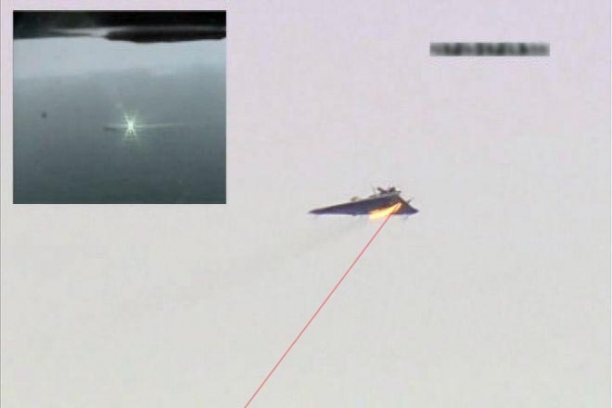
The US Navy has developed a directed-energy weapon known as LaWS (Laser Weapon System). In early 2014 (or late 2013) this directed-energy weapon would be installed in the USS Ponce for the purpose of field testing.
The Kratos Defense and Security Solutions developed this system in support of the US Navy's DE&EWS (Directed Energy & Electric Weapon Systems) program after being awarded a contract amounting to $11 million in the year 2010. However, in May 2012, the CIWS control system was used in NSWC test for enabling the beam director for tracking UAV target.
LaWs is primarily intended for ship defense, particularly against both suicidal and non-suicidal small boat attacks and drones. At present it isn't capable of engaging missiles, ships, submersibles, or large aircraft that are approaching the ship. The basic design of LaWs features a solid-state infrared beam that can be adjusted to low output for crippling the target's sensor, and a higher output for destroying a target. For every firing, only an energetic pulse needs to be generated, making it more efficient over projectile weapons in terms of operation, storage space, transportation, handling and maintenance.
|

Chiefly the Pershing tank was used by the U.S. Military during the Second World War. It was originally developed and considered as heavy tank T26 but after the war this was reclassified as medium, M26. The tank was named after General John J. Pershing who was the commander of the American Expeditionary Force in Europe during World War I. The Pershing was also used in the last stage of World War I and in Korean War. The M26 Pershing tank was the evolution of M4 Sherman. It was rarely seen in fighting scene but the most remarkable fight was in the Bridge at Remagen when it was used by the 9th Armored Division. In its strategic aspects in combating and fighting compared with M4 Sherman it was good defense weapon against the enemies against both the Tiger II and panther tanks. Even though, the M26 Pershing tank was not mechanically consistent and strong, it was superior match with T-34-85. It was obvious when it was pulled out in 1951 during the Korean War and replaced with more developed and upgraded container M46 Patton which has more powerful and reliable engine that can climb on mountainous terrain and move speedily on rocky roads. The innovation and improvement of M26 was continued with the M47 Patton followed by new design M48 Patton and M60 Combat Tank.
|
Meet at first hand what makes American military dangerous. Titanium teeth, fur, tail and a bit of German in them, the German Shepherds are real dogs of war. Hats off to all the dog trainers out there. Keep up the good work.
|
The M32 MGL, or otherwise knows as Multiple Grenade Launcher, was made in South Africa by Milkor Ltd.. It is a 40mmm six shot grenade launcher that has 40 mm. It was created by the South African military in the early eighties and then put into use in 1983. Over the years it was slowly adapted for use by the military in other countries and police forces all over the world. Since being invented they have made over fifty thousand units.
|
The US created the FGM-148 Javelin as a way to replace the Dragon antitank weapon. It's a weapon that can be carried by a man and then fired at a tank.
The way it works is that you can lock on your target before firing and the missile will self guide its way to the target. The missile specifically is used against the top armor of armored vehicle since it is normally much thiner than the other armor. It can also be used to shoot at buildings and go after enemy helicopters. It can go up to a height of five hundred feet when being used in top attack mode and sixty meters when in direct fire mode.
|
My god, this is by far the best footage of slow motion automatic weapon firing that I have ever seen. Gamers have their own virtual guns, but it does not even come close to this. It is a marvel of beauty to watch this in slow motion. Thanks to the Slow Mo Guys to who made this happened.
|
|
|

